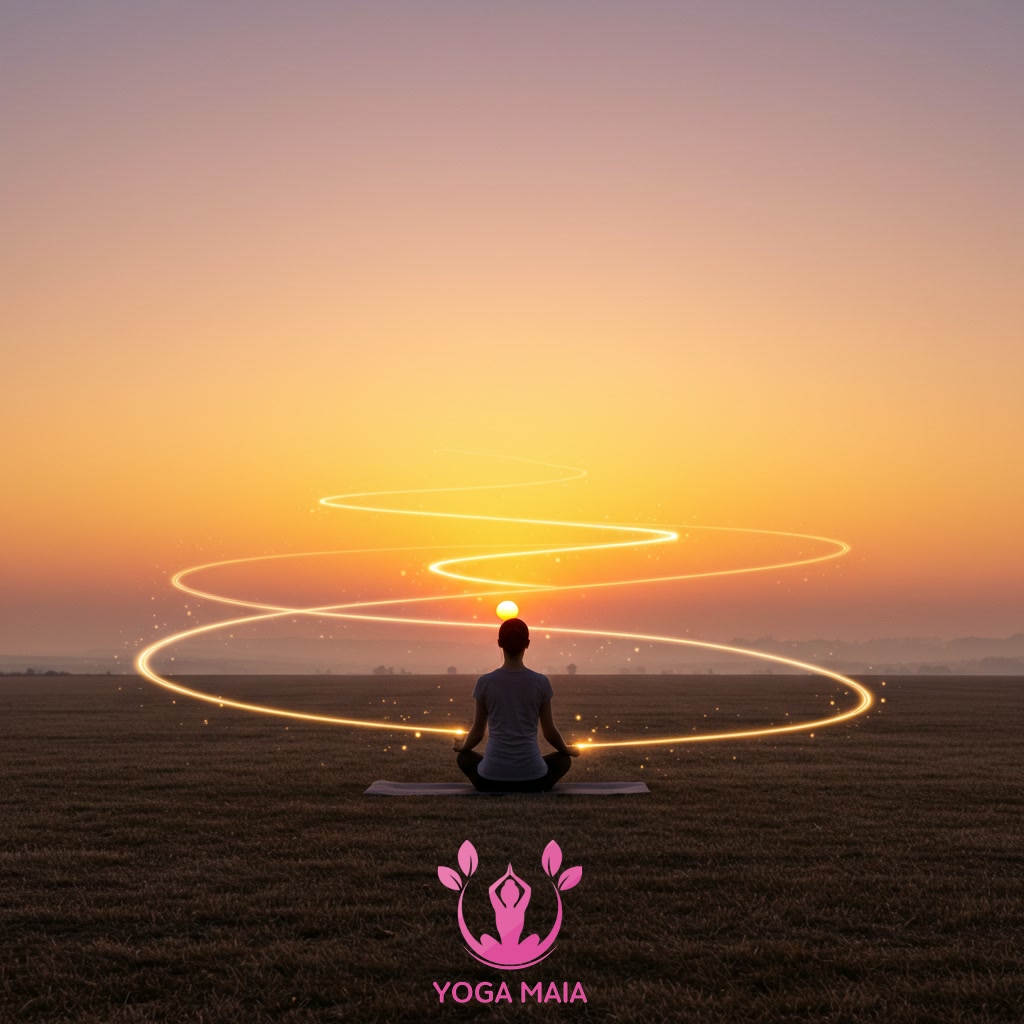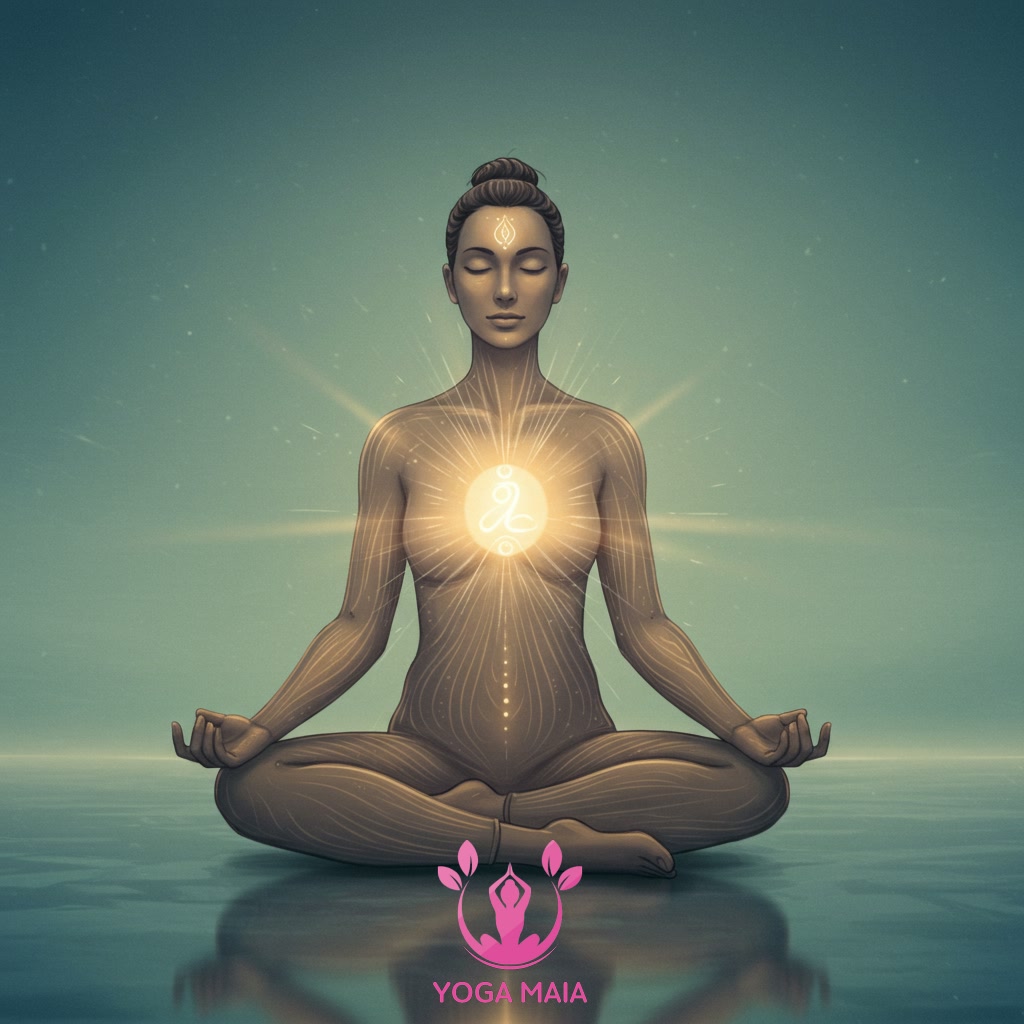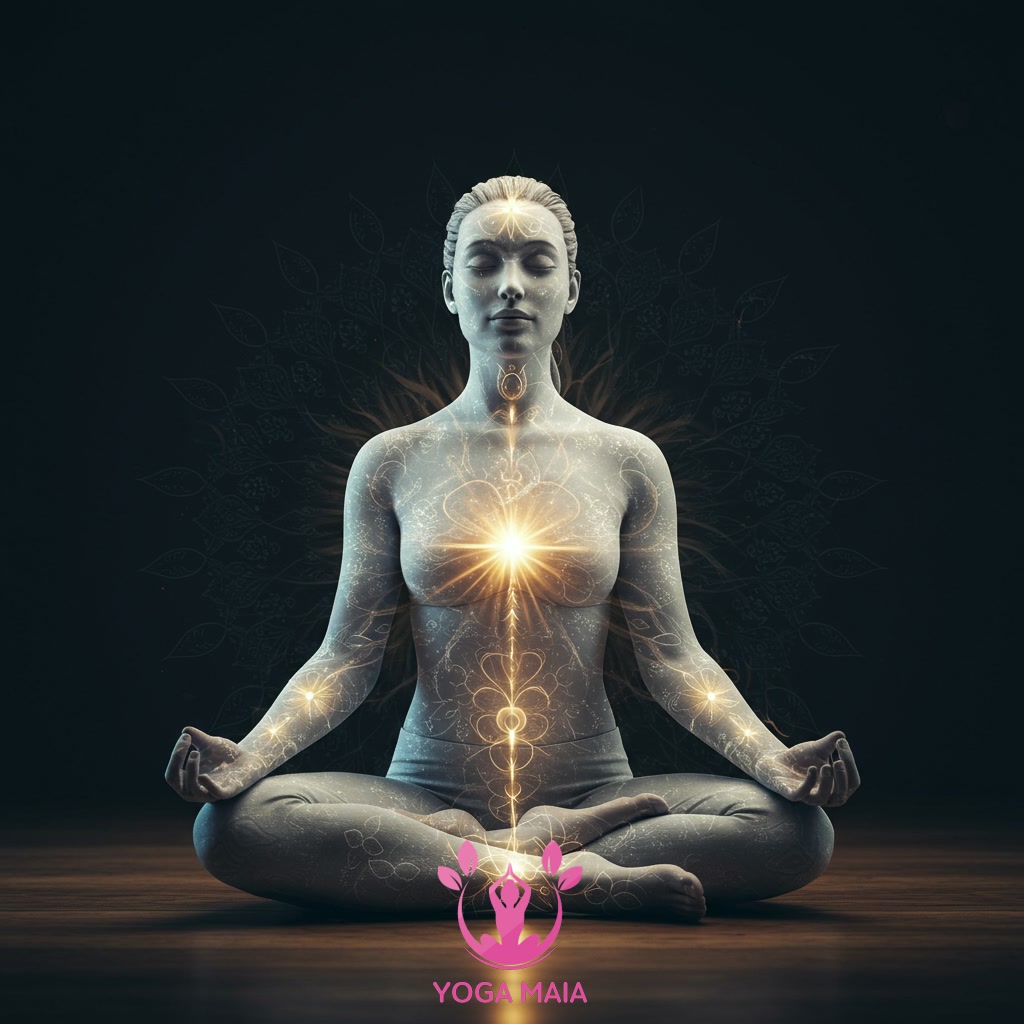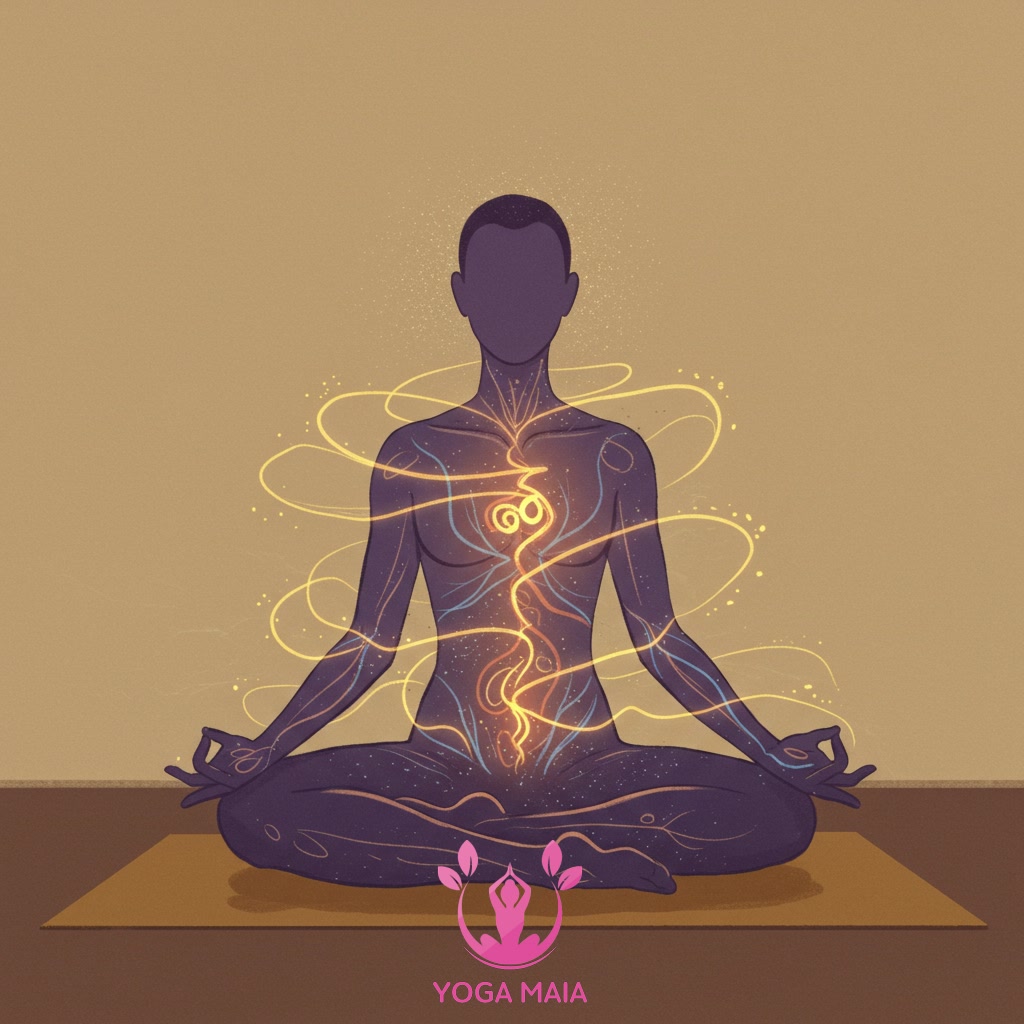Yoga Blog
Exploring Prana: The Yogic Concept of Life Force in Yoga Practice

This content delves into Prana, the yogic concept of universal life force energy. It explores how Prana is understood and cultivated through dedicated yoga practice. The material highlights the significance of this vital energy in enhancing physical, mental, and spiritual well-being. Understanding and working with Prana is presented as fundamental to advancing one’s journey in yoga.
Table of Contents
- Section 1: Introduction: Defining Prana and Its Centrality in Yoga
- Section 2: The Anatomy of Prana: Nadis, Chakras, and the Vayus
- Section 3: Pranayama: The Practice of Directing Prana
- Section 4: Prana Flow in Asana and Meditation
- Section 5: Cultivating Prana: Benefits for Body, Mind, and Spirit
- Section 6: Integrating Prana Awareness into Daily Life and Practice
Section 1: Introduction: Defining Prana and Its Centrality in Yoga
Prana is a foundational concept within the yogic tradition, understood as the universal life force energy that animates all living beings and permeates the cosmos. It is far more than just breath; Prana is the vital energy responsible for all physiological functions, mental processes, and even spiritual awareness. In the context of yoga practice, Prana is not an abstract idea but a tangible energy that practitioners learn to sense, direct, and cultivate. Recognizing Prana’s central role is key to understanding why yoga involves not just physical postures (asana) but also breath control (pranayama), meditation, and ethical practices. The primary goal of many yogic techniques is to purify and balance the flow of Prana within the body’s energy channels, or nadis, leading to enhanced health, vitality, and a deeper connection to one’s inner self.
 Introduction: Defining Prana and Its Centrality in Yoga
Introduction: Defining Prana and Its Centrality in Yoga
Section 2: The Anatomy of Prana: Nadis, Chakras, and the Vayus
Building on the understanding that Prana is the universal life force, yogic philosophy describes its intricate organization within the subtle body. This internal structure, often referred to as the ‘Anatomy of Prana,’ is primarily understood through three key concepts: Nadis, Chakras, and Vayus. Nadis are the energetic channels or pathways, analogous to rivers or streams, through which Prana flows throughout the system; thousands of these subtle channels are believed to exist, carrying vital energy. Situated along the major Nadis are the Chakras, dynamic energy centers often visualized as spinning wheels or vortexes. These centers are vital hubs that process and distribute Prana, influencing physical, mental, and spiritual well-being. Furthermore, Prana is differentiated into various functional currents known as Vayus, each responsible for specific movements and processes within the body and mind, such as respiration, digestion, and elimination. Mastering the flow of Prana involves purifying the Nadis, balancing the Chakras, and directing the Vayus through dedicated yogic practices like Asana and Pranayama.
 The Anatomy of Prana: Nadis, Chakras, and the Vayus
The Anatomy of Prana: Nadis, Chakras, and the Vayus
Section 3: Pranayama: The Practice of Directing Prana
Building on the understanding that Prana is the universal life force, yogic philosophy describes its intricate organization within the subtle body. This internal structure, often referred to as the ‘Annamaya kosha’ (physical body) and extending into the energetic layers, is where Prana flows through channels called nadis. Pranayama is the yogic practice specifically designed to work with this vital energy. Through conscious control and regulation of the breath, Pranayama aims to purify and balance the nadis, ensuring the smooth and unimpeded flow of Prana throughout the subtle body. This directed manipulation of breath allows practitioners to increase, conserve, and distribute Prana, leading to enhanced vitality, mental clarity, and spiritual awareness. Mastering Pranayama is considered essential for deeper meditative states and overall energetic well-being.
 Pranayama: The Practice of Directing Prana
Pranayama: The Practice of Directing Prana
Section 4: Prana Flow in Asana and Meditation
Building upon the subtle body structure, the practice of Asana and Meditation serves as a primary means to influence Prana flow. Asanas, or yoga postures, are designed not just for physical strength and flexibility but also to open and purify the energy channels, known as nadis. By moving the body through specific shapes and coordinating breath (Pranayama) with movement, practitioners help to remove blockages and allow Prana to circulate more freely within this internal network. Meditation, on the other hand, cultivates stillness and inner awareness, enabling the practitioner to become more sensitive to the subtle currents of Prana. Through focused attention and controlled breathing during meditation, Prana can be consciously directed, leading to deeper states of calm, clarity, and energetic balance. Together, Asana and Meditation create a powerful synergy, optimizing the distribution and vitality of this life force energy throughout the system.
 Prana Flow in Asana and Meditation
Prana Flow in Asana and Meditation
Section 5: Cultivating Prana: Benefits for Body, Mind, and Spirit
Cultivating Prana, the vital life force, through dedicated yoga practice yields profound benefits extending across the physical, mental, and spiritual dimensions. Physically, enhanced Prana flow revitalizes the body, increasing energy levels, improving circulation, and supporting overall vitality and resilience. Mentally, working with Prana calms the nervous system, sharpens focus, reduces stress and anxiety, and promotes emotional balance, leading to greater clarity and peace of mind. Spiritually, cultivating Prana deepens self-awareness, strengthens the connection to one’s inner self and the universal energy, facilitating a sense of purpose, inner peace, and spiritual growth. This holistic cultivation is fundamental to experiencing the transformative power of yoga.
 Cultivating Prana: Benefits for Body, Mind, and Spirit
Cultivating Prana: Benefits for Body, Mind, and Spirit
Section 6: Integrating Prana Awareness into Daily Life and Practice
Building upon the cultivation of Prana during formal yoga practice, the next step involves consciously extending this vital energy awareness into our daily lives. This integration means bringing mindful attention to our breath and energy state not just on the mat, but during simple activities like walking, working, or resting. By pausing throughout the day to observe the flow of Prana – noticing moments of vitality or depletion – we cultivate a deeper connection with our inner state. Simple practices such as taking a few conscious breaths before a challenging task or moving mindfully through routine actions can significantly enhance our presence and energy levels off the mat. This continuous, subtle engagement with Prana transforms daily life into a practice itself, fostering sustained well-being and deepening the impact of formal yoga.
 Integrating Prana Awareness into Daily Life and Practice
Integrating Prana Awareness into Daily Life and Practice












